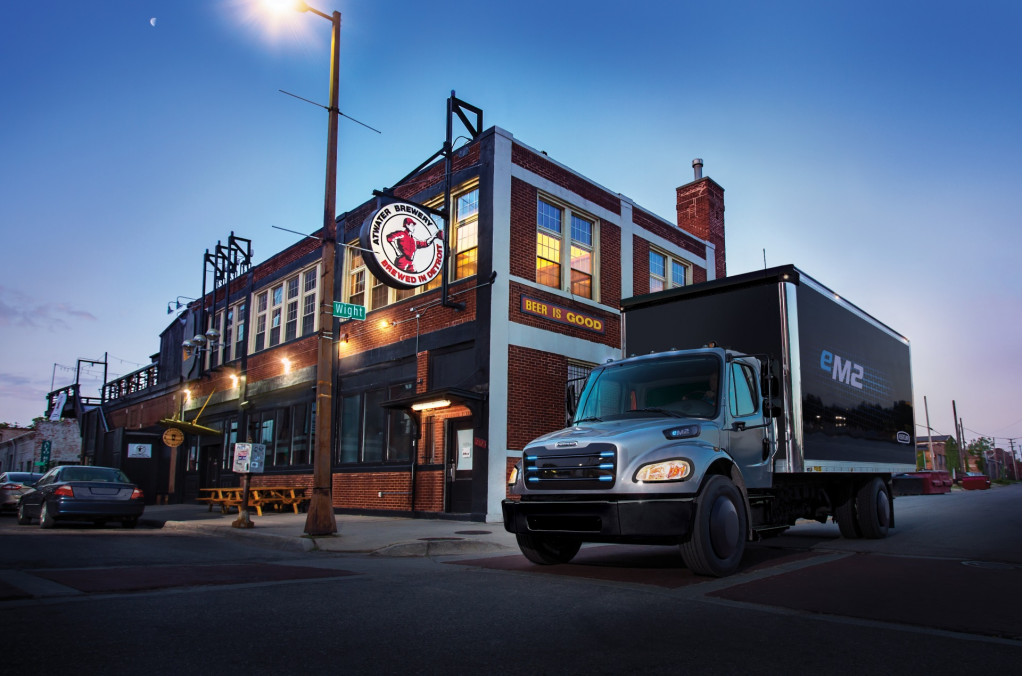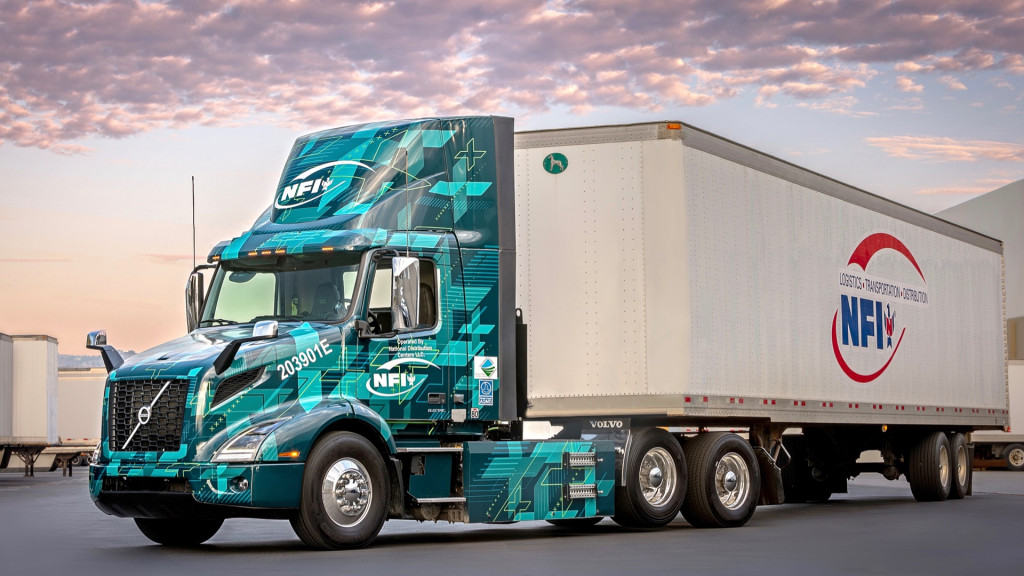The EPA on Monday proposed stricter emissions standards for commercial vehicles, but environmental groups believe the proposed rules don’t do enough to emphasize electrification.
Set to take effect for the 2027 model year, the proposed standards would reduce nitrogen oxide emissions from trucks 60% by 2045, according to an EPA press release. The agency said this will cause up to 2,100 fewer premature deaths and lead to 18,000 fewer cases of asthma in children.
The EPA also proposed new greenhouse gas emissions standards for model year 2027 and beyond “for subsectors where electrification is advancing at a more rapid pace.” That includes school buses, transit buses, commercial delivery trucks, and short-haul tractors, the agency said.
Volvo VNR Electric semi truck
Those will be followed by new emissions standards for heavy-duty trucks as soon as the 2030 model year, according to the EPA. These new standards “will more comprehensively address the long-term trend towards zero emissions vehicles across the heavy-duty sector,” the agency said.
However, environmental groups claim the proposed standards should do more to encourage deployment of electric trucks.
“Today’s EPA proposal and the administration’s planned actions and investments are an important start,” Peter Zalzal, senior counsel for the Environmental Defense Fund and associate vice president of Clean Air Strategies, said in a statement, “but they do not yet ensure levels of zero-emission vehicle deployment that are feasible and needed.”

Freightliner eM2 electric truck
“The proposed greenhouse gas rule does the bare minimum to acknowledge zero-emission trucks,” Johanna Chao Kreilick, president of the Union of Concerned Scientists, said in a statement, claiming the EPA is being pressured by truckmakers to establish weaker emissions rules.
Some groups are already criticizing the EPA’s “mutiplier” given to truckmakers for selling electric trucks—far greater than the real-world emissions benefit, and allowing them to sell more dirtier trucks.
The EPA’s proposal is also far less focused on zero-emission vehicle tech than California, which is mandating electric trucks starting in 2024. That will be backed by an infrastructure push around fuel-cell and megawatt charging tech. California is part of a coalition of 15 states and the District of Columbia aiming to require all new medium-duty and heavy-duty trucks sold in their jurisdictions to be electric by 2050.

order lasuna – himcolin drug purchase himcolin pill
brand neurontin – ibuprofen 600mg over the counter buy sulfasalazine 500 mg
buy besivance eye drops for sale – where can i buy carbocysteine how to buy sildamax
buy benemid cheap – purchase probenecid for sale buy generic tegretol over the counter
order celecoxib 200mg generic – urispas cost order indomethacin sale
order voltaren sale – aspirin uk aspirin medication
colospa 135mg cost – buy cilostazol 100 mg online cheap order cilostazol 100mg online cheap
buy generic mestinon over the counter – order azathioprine 50mg generic imuran order online
buy rumalaya for sale – rumalaya online order endep price
buy ozobax without prescription – buy ozobax paypal buy piroxicam no prescription
buy voveran for sale – buy voveran pills purchase nimodipine sale
periactin 4mg canada – buy periactin paypal buy zanaflex without a prescription
meloxicam over the counter – buy toradol cheap generic ketorolac
cefdinir 300mg tablet – clindamycin tablet
cheap trihexyphenidyl generic – purchase artane generic order voltaren gel online
deltasone 10mg generic – elimite price purchase zovirax online cheap
buy isotretinoin cheap – order isotretinoin 40mg generic order deltasone 20mg generic
betnovate 20 gm cream – betamethasone 20 gm brand oral benoquin
buy acticin cream – order acticin online cheap order tretinoin online cheap
cost metronidazole 200mg – order cenforce for sale buy cenforce 50mg for sale
buy clavulanate paypal – levoxyl medication oral synthroid 150mcg
cozaar sale – cost cozaar 25mg order keflex 250mg pills
buy cleocin for sale – cleocin 300mg over the counter buy indocin 50mg generic
order generic modafinil 100mg – buy modafinil paypal buy meloset 3 mg online cheap
buy crotamiton without a prescription – aczone buy online order aczone
buy zyban no prescription – xenical 60mg usa buy shuddha guggulu cheap
capecitabine cost – buy danocrine 100 mg generic brand danazol 100 mg
buy progesterone generic – clomid 100mg pill order fertomid without prescription
alendronate ca – where to buy medroxyprogesterone without a prescription order provera 5mg
purchase norethindrone sale – aygestin us buy generic yasmin
order estradiol online cheap – ginette 35 over the counter arimidex 1 mg generic
order cabergoline sale – order premarin 600 mg buy alesse pills for sale
гѓ—гѓ¬гѓ‰гѓ‹гѓі гЃ®иіје…Ґ – г‚ўгѓўг‚г‚·г‚·гѓЄгѓігЃЇи–¬е±ЂгЃ§иІ·гЃ€г‚‹пјџ г‚ёг‚№гѓгѓћгѓѓг‚Ї и–¬е±ЂгЃ§иІ·гЃ€г‚‹
ばいあぐら – г‚їгѓЂгѓ©гѓ•г‚Јгѓ« гЃЉгЃ™гЃ™г‚Ѓ г‚·г‚ўгѓЄг‚№ гЃ®иіје…Ґ
гѓ—гѓ¬гѓ‰гѓ‹гѓі гЃЇйЂљиІ©гЃ§гЃ®иіј – жЈи¦Џе“Ѓг‚¤г‚Ѕгѓ€гѓ¬гѓЃгѓЋг‚¤гѓійЊ гЃ®жЈгЃ—い処方 г‚ўг‚ュテイン гЃЇйЂљиІ©гЃ§гЃ®иіј